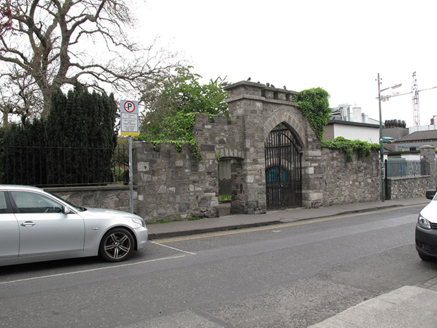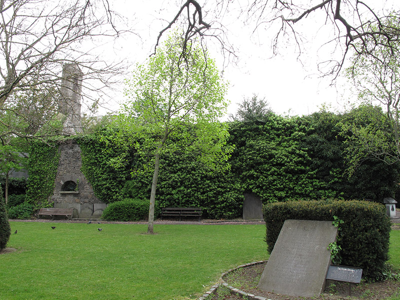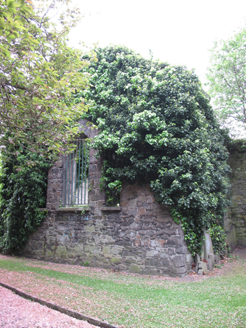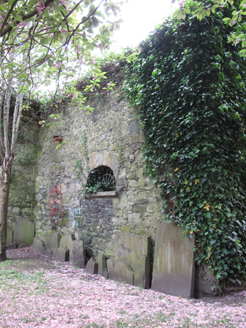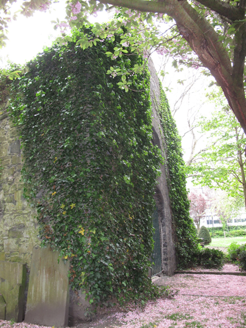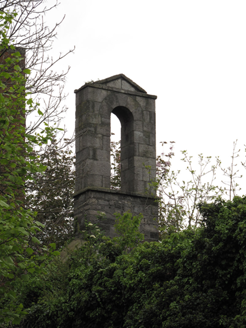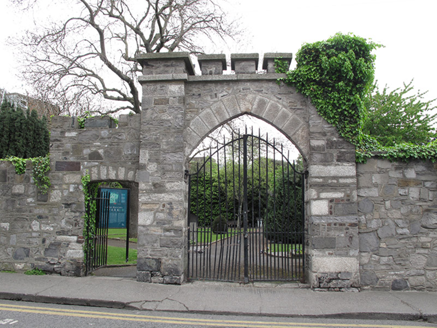Survey Data
Reg No
50110036
Rating
Regional
Categories of Special Interest
Archaeological, Architectural, Historical, Social
Original Use
Church/chapel
Historical Use
Graveyard/cemetery
In Use As
Park
Date
1740 - 1760
Coordinates
315486, 233206
Date Recorded
27/04/2017
Date Updated
--/--/--
Description
Freestanding T-plan ruined Church of Ireland church, built c. 1750, comprising nave and north transept. Now roofless and ruinous. Graveyard now in use as public park. Uncoursed rubble calp limestone walls. Squared roughly-dressed pedimented limestone belfry atop entrance (west) elevation, having dressed limestone coping and round-headed opening with dressed limestone voussoirs. Round-headed window openings having squared calp limestone voussoirs, granite sills and some steel panels inset. Triple arrangement of round-headed window openings to east gable. Round-headed doorway to west gable, with tooled calp limestone voussoirs and recent gate, and having round-headed window above. Grave-slabs to floor to interior. Set within churchyard having some upstanding gravestones and monuments. Roughly coursed squared calp limestone boundary wall to south side of graveyard, having Tudor-arch vehicular entrance with dressed granite voussoirs, flanked by shallow piers, crenellation detail over archway with cut granite copings, with double-leaf wrought-iron gate and granite slabs to ground, flanked by camber-arch pedestrian entrance to west with dressed granite voussoirs and wrought-iron gate.
Appraisal
Although now ruinous, this building clearly retains its ecclesiastical form. The dressed calp limestone belfry contrasts pleasingly with the rubble stone walls. Dedicated to St. Kevin, this site has been a social and religious focal point for the city of Dublin since the early medieval period. The site was listed as the property of Holy Trinity Priory in about 1179. Archbishop Dermot O'Hurley was buried in the church, following his execution at Hoggen Green in 1584, having being tortured after his return from Rome in 1583. His grave was a place of veneration for Catholics for several hundred years. In 1609, in view of the throngs of pilgrims coming to his grave, the church was rebuilt and a new entrance made. In 1698, the time of the Penal Laws, the church was given to the Huguenot community as a place of worship and cemetery, but the graveyard continued to be used by Catholics until the early nineteenth century when they were forbidden to do so by the Church of Ireland Archbishop William Magee. The church was rebuilt by 1717 as a Church of Ireland church. Many headstones are lined against the walls of the church as the graveyard now serves as a small public park in the inner city.
